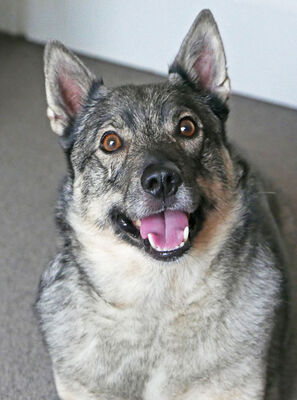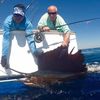Shooting into the Sun
Mar 23, 2018 14:14:44 #
rdrechsler
Loc: Channel Islands Harbor, CA
I need some pointers. I’m going to be shooting some boats on Sunday morning and the sun will be almost directly behind them. I don’t want the boats to be in silhouette because the objective is to capture the people on board. Can I get some help with settings so I don’t encounter a problem?
Mar 23, 2018 14:19:52 #
RWR
Loc: La Mesa, CA
rdrechsler wrote:
I need some pointers. I’m going to be shooting some boats on Sunday morning and the sun will be almost directly behind them. I don’t want the boats to be in silhouette because the objective is to capture the people on board. Can I get some help with settings so I don’t encounter a problem?
Meter on the subject. To minimize flare, a long lens is best, telephotos or zoom lenses are the worst.
Mar 23, 2018 14:26:43 #
RWR wrote:
Meter on the subject. To minimize flare, a long lens is best, telephotos or zoom lenses are the worst.
With respect, you confused me. "A long lens is best, telephotos or zoom lenses are the worst." Aren't telephotos classed as long lenses, depending on their length? Are you talking a telephoto of 100mm or 300-600? Your statement seems to contradict itself.
Dennis
Mar 23, 2018 14:33:03 #
rdrechsler wrote:
I need some pointers. I’m going to be shooting some boats on Sunday morning and the sun will be almost directly behind them. I don’t want the boats to be in silhouette because the objective is to capture the people on board. Can I get some help with settings so I don’t encounter a problem?
Meter the opposite direction off of your hand. Then set the camera manually to that setting and leave it there. No reason to have the exposure going up and down and up and down for no reason. In fact this is the way I'd shoot when the light conditions aren't changing drastically even if it wasn't sail boats or whatever; I'd meter off of my hand (or a grey card) and leave the exposure set like that until something changes drastically (like clouds roll in or something)
Mar 23, 2018 14:39:17 #
RWR
Loc: La Mesa, CA
dennis2146 wrote:
With respect, you confused me. "A long lens is best, telephotos or zoom lenses are the worst." Aren't telephotos classed as long lenses, depending on their length? Are you talking a telephoto of 100mm or 300-600? Your statement seems to contradict itself.
Dennis
Dennis
This will probably explain the difference better than I can: https://en.wikipedia.org/wiki/Telephoto_lens
Basically, when shooting into the light, the fewer lens elements, the better.
Mar 23, 2018 15:03:56 #
rdrechsler
Loc: Channel Islands Harbor, CA
All my lenses are zoom. I’m not sure yet whether to use the 70-200 or 200-500, but my inclination is to go with the AF-S 70-200, f/4E ED VR. I noticed some flare with a couple of practice shots I just took, but putting the lens hood on solved that problem.
I liked the idea of metering on my hand and then setting those readings in manual. I shot the resulting readings which were ISO 64, f/11, 1/400th @70mm. The results were quite good. Certainly nothing that couldn’t easily be cleaned up in PP because the subject, in this case a mast, was just a little underexposed.
Any other ideas?
I liked the idea of metering on my hand and then setting those readings in manual. I shot the resulting readings which were ISO 64, f/11, 1/400th @70mm. The results were quite good. Certainly nothing that couldn’t easily be cleaned up in PP because the subject, in this case a mast, was just a little underexposed.
Any other ideas?
Mar 23, 2018 15:04:22 #
Mar 23, 2018 15:12:53 #
rdrechsler
Loc: Channel Islands Harbor, CA
PaulR01 wrote:
Spot metering, polarizing filter and lens hood.
Check, check and check. Thanks
Mar 23, 2018 15:24:18 #
rdrechsler wrote:
Check, check and check. Thanks
A polarising filter wont help much, if at all, directly in to the sun.
Mar 23, 2018 17:14:22 #
The suggestion of metering your palm with your back to the sun mimicks an incident light meter at the subject. Don’t forget your palm is one stop lighter than a gray card.
Mar 23, 2018 17:41:21 #
RWR wrote:
Meter on the subject. To minimize flare, a long lens is best, telephotos or zoom lenses are the worst.
How is a long lens different from a telephoto?
Mar 23, 2018 17:51:21 #
rdrechsler wrote:
I need some pointers. I’m going to be shooting some boats on Sunday morning and the sun will be almost directly behind them. I don’t want the boats to be in silhouette because the objective is to capture the people on board. Can I get some help with settings so I don’t encounter a problem?
Make sure your lens, and filter if you are using one, are absolutely spotless. Any dust or crap on the front element will pick up light and disperse it really messing up your contrast. Use the camera's spot meter to determine an exposure you are happy with - in this situation a histogram will give you what you need to know, but used together with the image preview you'll get information to set your camera with. You are looking for good midtones which you will likely see as a bump in the center of the histogram, and a big spike at the right end which will be the sun, and highly reflective surfaces. The main thing is to look for people, and make sure they are not too dark. It's ok if the sun is in your image.
You can use any focal length you need. If you use a wide angle lens the sun will be a small bright dot - be especially vigilant for lens flare, which can also mess up a shot. Using a long lens could minimize the sun being in the picture at all.
If you are shooting towards the sun, the only value of a circular polarizer is to cut down the light - it's not going to have much effect on most of the image.
If you shoot raw, you can underexpose the image slightly and reveal the shadows in post processing better than you can if you shoot jpeg.
If you take a test shot, and the boats are in silhouette, then you need to increase your exposure. Have fun and post some pictures.
Mar 23, 2018 18:39:22 #
TonyP wrote:
A polarising filter wont help much, if at all, directly in to the sun.



Mar 23, 2018 20:22:26 #
RWR
Loc: La Mesa, CA
Gene51 wrote:
How is a long lens different from a telephoto?
“Long focal length” would have been more accurate - my bad. The distance from the rear element to the focal plane (back focal distance) will be the same as the actual focal length when focused at infinity. With a telephoto lens, additional elements shorten the distance.
Mar 23, 2018 20:57:26 #
rdrechsler wrote:
I need some pointers. I’m going to be shooting some boats on Sunday morning and the sun will be almost directly behind them. I don’t want the boats to be in silhouette because the objective is to capture the people on board. Can I get some help with settings so I don’t encounter a problem?
Dick, welcome to the Hog!
This is gonna be a tricky shoot.
ANYTIME, you have a bright light source in your shot you have a high dynamic range shot and it will be beyond the normal capability of your DR.
Also if you are shooting fairly directly at the light source you WILL get light orbs. Either incorporate the orbs and the blowout of the background into an artistic type shot or deal with the consequences of the bright sun.
And there is DoF to deal with. How much DoF do you want in the shot. A bokehed background will require an ND filter. Good luck
SS
If you want to reply, then register here. Registration is free and your account is created instantly, so you can post right away.







